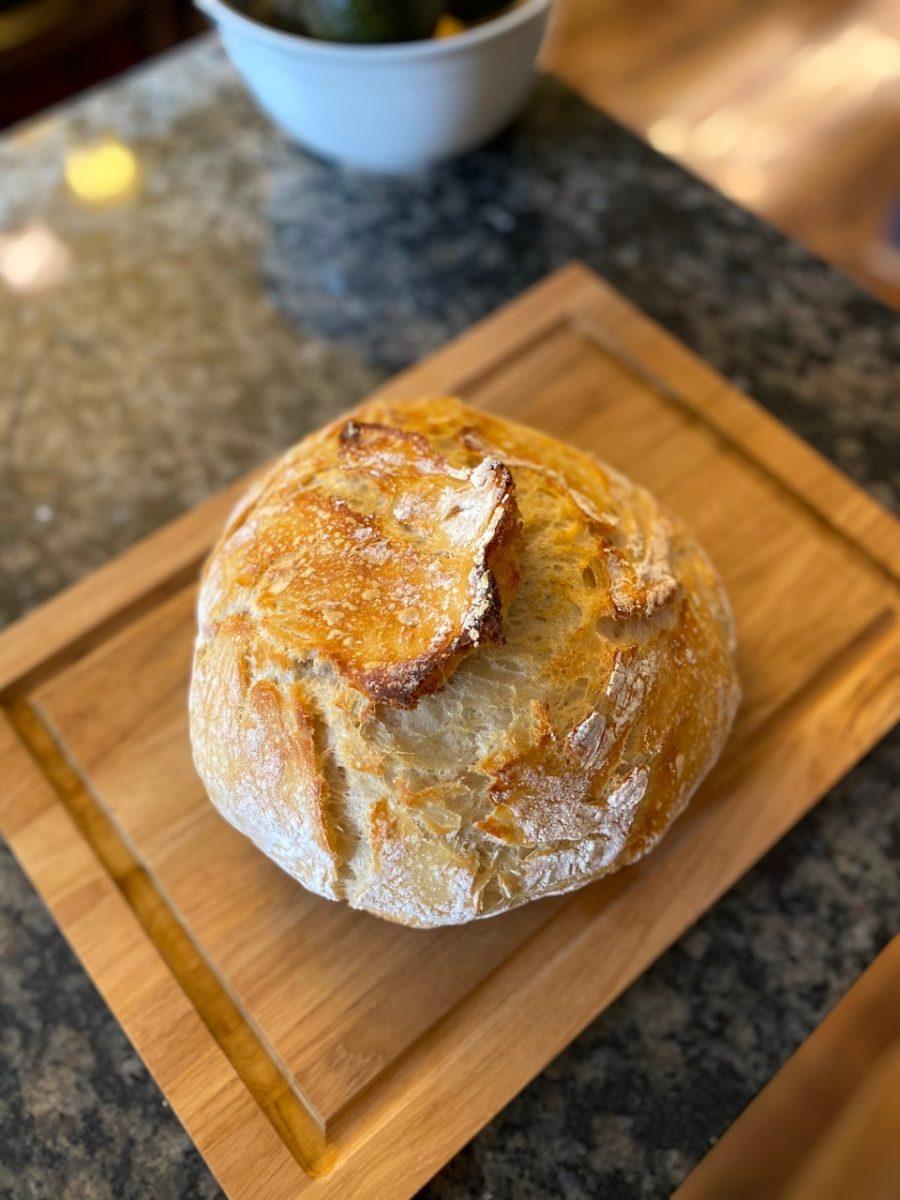By Nadja Peschke
Sourdough starter is the baker’s pot of gold. It begins simply, in any bowl you have handy: 1 c. of flour and ½ c. water with 24 hours of rest (King Arthur Flour has a handy recipe online). From there, a little bit of a mad hatter’s tinkering sets in. You feed it twice a day, in the morning and at night. The homemade yeast bubbles, grows, ferments and fills your home with the anticipation of the coveted sourdough boule. This loaf isn’t an average, spongey sandwich bread. It has the fruity tang of sourdough starter, the crackled crust of your dreams, and a chewy, airy rise.
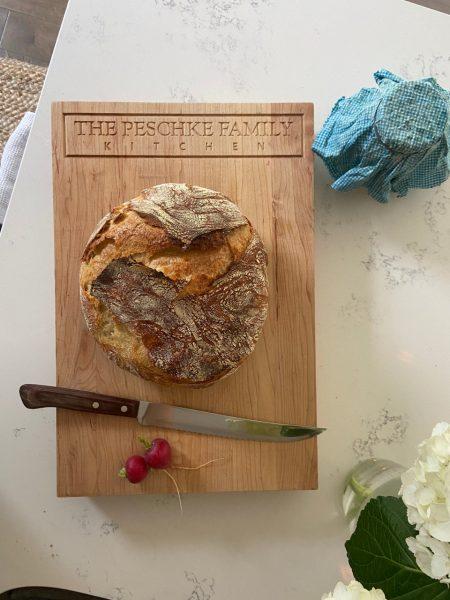
I started experimenting with sourdough baking mid-March after watching a random art Instagram account’s story tutorial. It gave me the gumption to go for I,t and to me that serendipity is the spirit of sourdough baking: Having fun, experimenting without a set of rules, and allowing myself to make mistakes. The weeks since have helped me to trust my gut, loosen my perfectionist grip, and give my days purpose and structure.
Our sourdough starter – a living organism – has single-handedly crossed bread off of our family grocery list. It’s fantastic hot, cooled, or toasted with marmalade. I’ve become so obsessed that I’m starting to design our meals around a daily boule. I’ve posted more pictures of bread than I can count now on my Instagram, and will continue to do so shamelessly!
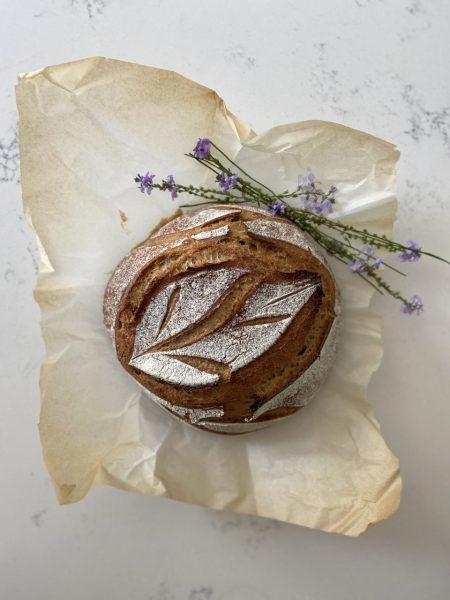
There’s a sourdough community within our Principia community, and this week I got to chatting with BK Grimmer and Stephanie Young, both of whom are currently busy sculpting their bread skills. For Grimmer, it’s a familiar project she’s devoting more time to during the pandemic, and for Young it’s a newfound skill.
“It’s a creative outlet,” said Grimmer, adding that the kitchen is her happy place. It’s also “surprisingly therapeutic and people who may not have otherwise tried will find something, maybe, that works for them,”
When preparing your dough, get your fingers involved with the shaping, stretching, and pulling. It’s my favorite part because of the satisfying process and it also helps me feel out the dough’s consistency.
Grimmer agreed: “There’s something about texture and you can just feel it… it’s worth it to persevere!”
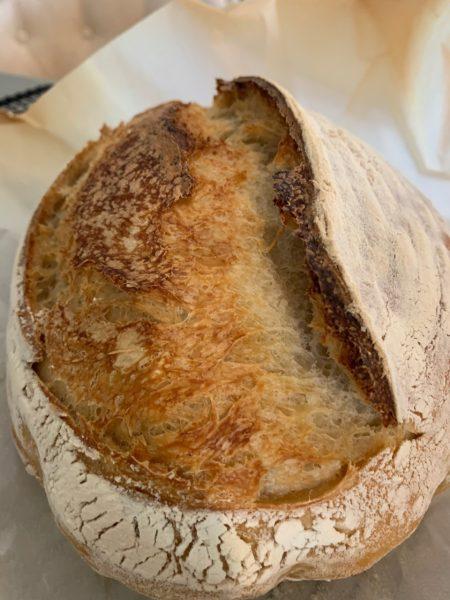
An avid baker, Grimmer takes her sourdough to the next level and uses combinations of whole wheat, unbleached, or rye flours to test the limits of the sourdough signature flavor.
Some reassurance for those starting out: Asking for help is always an option! A friend shared their starter with Young, and Grimmer once ordered a specialized starter from sourdough experts across the country.
“I can’t imagine doing this without a Dutch oven,” said Young, referring to a hefty, porcelain-covered cast iron pot. “We bought one specifically for this and I think it makes all the difference in the world!”
A Dutch oven helps create that quintessential crust by preheating in the oven before you place your dough in it.
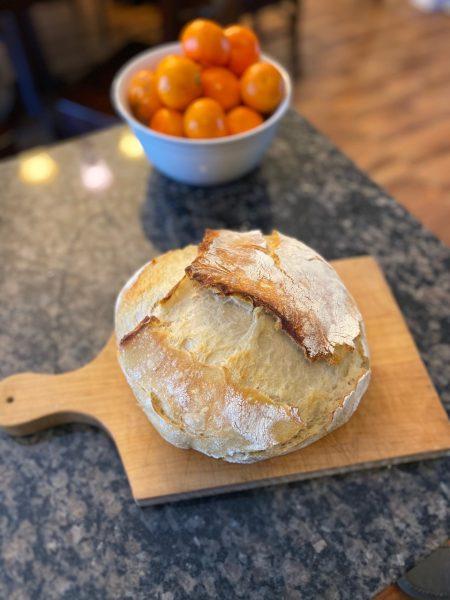
Also key is patience, said Grimmer. “It’s really hard to kill a sourdough starter.”
She grew up with an aunt who ran a bakery, and speaks from years of experience. “For any bread making, but especially sourdough, patience, patience and more patience. Just when it looks like it’s about to fail you want to throw it out and that’s when you shouldn’t give up on it.”
Like regular yeast doughs, altitude and humidity can have an impact on sourdough. Young laughed at a fluke, humid day in April that made her dough over-proof and get majorly sticky.
With every feeding, your starter grows, creating an excess of discard starter. With the help of sourdough comrades and Google, I’ve made crackers, waffles, rolls, English muffins and bagels using the discard.
Grimmer loves using her discard in chocolate chip scones and mouth-watering blueberry-lemon pancakes. Young’s 3-ingredient biscuit recipe helps in a pinch when she’s low on eggs or butter.
In any yeast recipe, subtract some of the original recipe’s liquid and flour to counterbalance using sourdough starter. So, don’t feel obligated to go through the bread process daily – it can be used in recipes aplenty!
Once the starter has matured, it can be stored in the fridge and fed weekly. As long as it’s bubbling and not freezing in the back of the fridge (true story), it’ll be just fine. I keep my mature starter in a mason jar with a loose covering, and it can go in the fridge or be left out and fed often if I’m baking regularly.
Grimmer and Young both plan on letting baking continue to inspire their days. Grimmer’s sister, from a few states away, challenges her to cook and bake her best. Inspired by their mother, the sisterly tradition continues today on their shared foodie Instagram page: @mykitchenhappy.
Young, too, sees the joy of sharing her bread with loved ones. “I want to keep the starter and continue it when I can. I can’t wait to make my parents a hot loaf of bread.”
Featured image courtesy of Stephanie Young


